Table of Contents
Almost all of us have been told at some point that any object that holds soil can be used as a gardening container. This is not necessarily the most reliable advice, even though it may be true.
By this advice, an inexperienced gardener might be led to think that just about any plant can be planted in any type of container successfully. However, that’s not the case.

Well, we have seen people growing plants in coffee mugs, tea kettles or a boot. Small containers such as a boot or a coffee mug will work well for planting a tiny, drought-resistant succulent plant. Tea kettles are a terrible idea for growing watermelon vines, however. We should focus on selecting the most suitable container for each plant rather than selecting the prettiest or cleverest object as a container.
In deciding what type of pots to use in your container garden, you have to take into account many factors. Physical appearance certainly plays a big part in the decision-making process, but there are other, more crucial aspects to keep in mind. Let’s go over them one by one.
Size of the container for indoor or kitchen gardening
The size of a container is extremely critical for a number of reasons.
The bigger the container, the more potting mix it can hold, and the more root growth it can support. The plant will have more room to spread its roots evenly. A fruit or vegetable plant with an extensive root system is less prone to water stress and is healthier overall, making it less vulnerable to pests and better equipped to fight pathogens. The easiest way to promote healthy, productive plants, regardless of what you’re growing, is to choose a container that will hold enough soil for a year’s root growth.
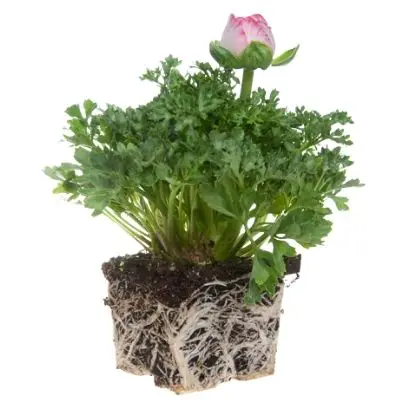
A plant whose roots clump together and circle around inside the pot is referred to as “pot bound” or “root bound”. Due to root competition, drought, and nutritional deficiencies, they are more susceptible to suffering ill effects. Therefore, pot-bound plants are very stressed.
A stressed plant’s immune system is weaker, making it more likely to be attacked by pests and pathogens.
The root system of plants grown in small containers can only support a limited number of top branches before they reach their full potential. They “max out” at a certain height due to their limited root system. Generally, when plants are packed into too small pots, their yield is significantly reduced.
Large containers also have the benefit of requiring less frequent watering. Containers that hold more potting mix or compost can also hold more water. A high-quality potting mix can help you achieve this goal.
*A must read : How to make your own potting mix

In essence, larger containers equal more soil volume, which means less watering frequency.
The equation is of course influenced by other factors, like how thirsty a particular plant is, how much sun the container receives, whether or not it is porous, and whether or not the pot is exposed to drying winds. It is generally true, though, that a larger pot requires less watering.
To find out which container size is ideal for each specific plant, some trial and error may be necessary, however, it is always better to have a large container instead of a small one.
Not only container size but plant container placement depending on the sunlight also plays a major role in dictating the success of indoor container gardening.
Minimum container size needed for specific plant
If you are selecting plants for a container, we recommend that you use the plant-specific guidelines listed below. This list displays the container sizes which contain the minimum soil volume required for each plant. In the case of combining multiple plants in the same pot, you’ll need to add the measurements together to ensure there’s enough space to allow the roots to grow.
*Please keep in mind that these are just guidelines and not rigid rules. For instance, a much bigger container will be required for a regular sized pepper plant than the container used for the dwarf version of the pepper plant. However, if you can, leaning towards a slightly larger container is always advisable.
> 30 GALLON ( 115 Liters ) CONTAINER
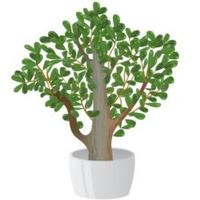
- Columnar fruit tree
- Dwarf tree
- Evergreen tree
- Small shade tree
20 – 30 GALLON ( 115 – 75 Liters ) CONTAINER
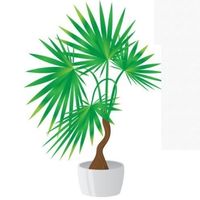
- Large plants
- Shrubs
- Tropical flowering plants
- Goji Berries (Lycium spp.)
- Blueberries (Vaccinium spp.)
- Hydrangeas (Hydrangea spp.)
- Figs
10 – 15 GALLON ( 38 – 57 Liters ) CONTAINER
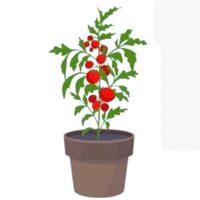
- Extra large vegetables plant
- Pumpkins (Cucurbita spp.)
- Artichokes (Cynara cardunculus var. scolymus)
- Winter squash (Cucurbita spp.)
- Full size tomatoes
8 – 10 GALLONS ( 30 – 38 Liters ) CONTAINER
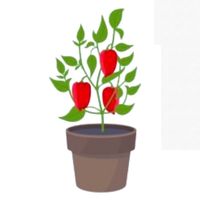
- Large fruit plant
- Large vegetable plant
- Bush type winter squash variety
- Tomatillos (Physalis philadelphica)
- Cucumbers (Cucumis sativus)
- Peppers
- Summer squash/zucchini (Cucurbita pepo)
- Eggplants (Solanum melongena)
- Dwarf blueberry bushes
5 – 8 GALLONS ( 19 – 30 Liters ) CONTAINER

- Flower plants
- Medium sized vegetable
- Foliage perennial
- Broccoli (Brassica oleracea var. italica)
- Okra (Abelmoschus esculentus)
- Brussels sprouts (Brassica oleracea var. gemmifera)
- Bush-type Cucumbers
- Ornamental grass
- Cauliflower (Brassica oleracea var. botrytis)
- Cabbage (Brassica oleracea var. capitata)
1 – 2 GALLONS ( 4 – 8 Liters ) CONTAINER
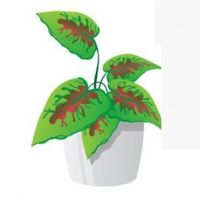
- Small vegetables
- Flowering plant
- Foliage annuals
- Greens
- Herb plants
- Kohlrabi (Brassica oleracea var. gongylodes)
- Spinach (Spinacia oleracea)
- Chard
- Collards (Brassica oleracea var. medullosa)
- Kale (Brassica oleracea var. sabellica)
- Lettuce
ANY SIZE CONTAINER
It does not matter what size container you use for these kinds of plants ( roots and tubers included). Just make sure they are spaced at the proper distance for optimum growth, and the pot is deep enough for the roots to be able to grow freely. The smaller the pot, however, the fewer seeds and plants it can accommodate.
- Carrots
- Bush beans
- Potatoes
- Radish
- Strawberries
- Turnips
- Beets
- Corn
- Onions
- Peas
Drainage system of a container
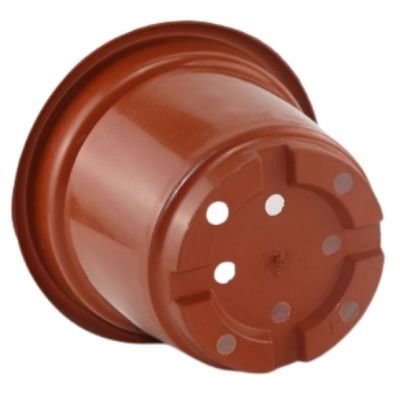
It is also imperative to look for adequate drainage in a container. In the bottom of the container, drainage holes allow excess irrigation water to drain out rather than soaking the soil and causing root rot.
Further, excess fertilizer salts are flushed from the soil by the drainage holes. A lack of drainage could cause fertilizer salt burn on the root and shoot tips of your plants.
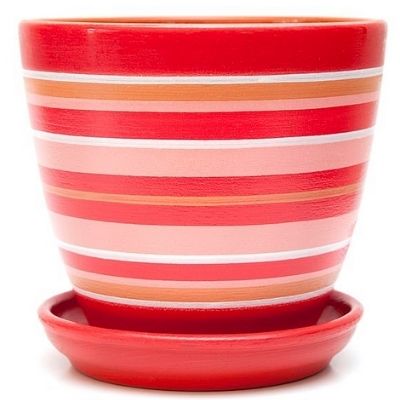
In case you’re using a saucer beneath your container to catch drainage water, make sure you empty it shortly after watering. An overfilled saucer is as bad as a pot with no drainage holes.
The bottom of most commercially available garden pots is drilled with a drainage hole. You will need to make a drainage hole if your container does not have one.
How to drill drainage holes in the bottom of various types of potting container ?
- Plastic or resin containers should be drilled with a spur-point bit or plastic drill bit.
- Using a spade or twist bit on your drill will work if you are drilling a wood container.
- Metal containers require either scratch punches and hammers to punch holes in them, or high-speed steel drill bits (HSS) to drill holes.
- A drill fitted with a tile bit should be used on ceramic or glass containers.
- Use a drill equipped with a masonry bit to make a hole in terracotta or concrete containers.
For drilling through the pot’s bottom, use a slow speed and a steady, soft pressure. Do not use the wrong bit or push too hard to avoid damaging the container.
In a pot, one or two large 0.5 to 1 inch ( 1.25 – 2.5 cm ) diameter drainage holes are preferable to dozens of small holes that can become clogged easily.
If you’re using a scratch awl/punch and hammer to make holes in the bottom of a metal container, rotate the awl inside the holes to make them wider as per the need.
Various materials used to make potting containers
Indoor potting containers are also made of different materials, which is important to consider.
Material choice should be weighed against pros and cons before making a final decision on which kind of container to invest in. (either you are growing fruits and vegetables or growing herbs and spices)
Listed below are the most common materials for containers as well as a list of aspects to keep in mind.
13 Types of materials used to make indoor or kitchen gardening potting containers :
CLAY / TERRACOTTA CONTAINERS

Clay is porous in nature, ensuring plant roots have ample air circulation. However, clay dries out more quickly than other materials.
Clay is able to absorb heat. This is a positive factor in cooler seasons. However, soil temperatures in the pot can become too warm during the summer.
White salt stains can also appear on the exterior of clay pots, while moss growth can turn them green.
Terracotta container is one of the cheapest options available. But, it is breakable, heavy, and prone to weather damage.
The Terracotta container is available in a number of styles, shapes, and sizes, and glazed and fired Terracotta containers tend to be less prone to cracking and flaking.
GLAZED CERAMIC CONTAINERS

A fine-textured clay is used to create these containers, which have been glazed and fired in a kiln. Various colors, styles, and sizes are available in glazed ceramic garden pots.
Unlike regular clay pots, these are expensive, decorative and impressive. But, these containers are also heavy and breakable. Freeze-thaw cycles can crack or flake or chip these containers.
Glazed ceramic containers are less porous as compared to terracotta containers.
Glazed ceramic containers hold moisture well.
PLASTIC CONTAINERS

With the advent of plasticulture, plastic garden containers have improved greatly. Nowadays, these pots are decorated with decorative styles and colors to give the appearance of other materials.
Plastic containers are inexpensive, lightweight, and durable. They do not crack as easily as terracotta or ceramic containers.
If dropped or left outside during the winter or summer, some plastic containers will fade, chip, and crack. Some, however, are more resilient.
Plastic pots with double walls are good insulators, and all plastic pots maintain soil moisture well.
The appearance of faded plastic pots can be restored by painting them with a good-quality exterior paint.
FIBERGLASS CONTAINERS
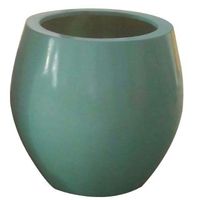
A fiberglass composite is made of plastic and glass fibers.
Fiberglass garden pots are lightweight and can be molded into a variety of styles and patterns to resemble concrete, stone, or glazed ceramic. They are, however, susceptible to cracking if dropped.
Additionally, they are usually quite expensive.
RESIN CONTAINERS

Resin garden pots are typically made from low-density polyethylene composites that are poured into molds and baked.
Resin containers can be made to look like granite, stone, or other materials that give them an ultra-modern appearance.
In addition to being maintenance free, resin is lightweight and crack resistant.
Resin planters of poor quality may fade when exposed to ultraviolet light.
Resin containers are well suited to handling temperature fluctuations.
WOOD CONTAINERS
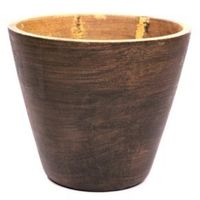
A wooden planter box is very affordable, especially if you build it yourself.
Redwood, cedar, and locust are rot-resistant woods that make the finest planters. You can also use pressure-treated lumber for planters.
Both cottage gardens and suburban landscapes benefit from the informal, natural appearance of wood.
You’ll need to replace wood planters eventually, but they’ll last you for a long time.
During the heat of summer as well as in the cold of winter, wood acts as an excellent insulator to protect roots from fluctuations in temperature.
GROW BAGS / FABRIC CONTAINERS
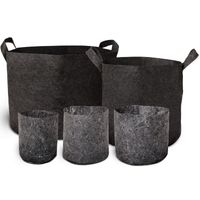
Fiber-textile fabric is used in making these lightweight containers, which are portable and easy to handle.
Planters made of fabric are low-cost, and BPA-free containers are the most suitable for growing edible plants.
Using fabric bags prevents root circling and pot-bounding, which is one of their major benefits. Rather than starting to circle around inside the pot when a root hits the fabric, the root spreads out, creating a fibrous root network rather than a pot-bound plant.
Even when left outside during the winter months, the material remains durable for many years.
Also, fabric pots provide good gas exchange, allowing the roots to breathe, stabilizing soil temperatures, and allowing the roots to grow.
There are many colors and sizes to choose from. There are even some big enough to contain trees. There are even some with handles.
METAL CONTAINERS
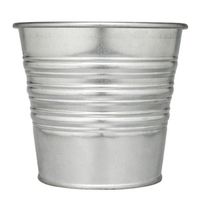
There are numerous metals that can be used to create containers, including copper, galvanized metal, stainless steel, steel, cast iron, aluminum, and many others.
Steel and cast iron can rust if not painted, despite their attractive appearance.
Despite their light weight, thinner metals such as aluminum are prone to denting. On the other hand, cast iron is resistant to cracking or dents, but it is extremely heavy.
Aluminum, galvanized metal, copper, and stainless steel are all used to make rust-proof metal containers.
A powder-coated finish provides a colorful, fade-resistant finish to steel and aluminum containers.
FIBERSTONE CONTAINERS

Crushed limestone and fiberglass are mixed with a composite to create fiberstone.
Fiberstone containers are lighter and easier to move than stone containers, even though they look like stone.
In comparison to regular fiberglass pots, Fiberstone pots are more durable, weather proof and thicker. It is unlikely that they will crack or flake when left outside throughout the year.
One of their biggest drawbacks is their high price.
POLYSTYRENE CONTAINERS
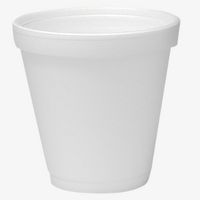
A polystyrene foam container of high quality can be quite expensive. It is built to look like heavier materials like terracotta, stone, concrete, ceramic, or metal. However, they are very light.
Being a good insulator, foam planters effectively protect plant roots from extreme temperatures and heat.
Chips and dents are common in polystyrene foam containers with raised, embossed designs.
It is possible to use these containers for many years even if left outside.
FIBER-LINED CONTAINERS
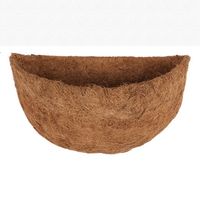
Various planters, including porch planters, hanging baskets, hayracks, and railing planters, are made with this type of material, which is made with a metal frame covered with coconut fiber ( coir or cocopeat) or a synthetic substitute.
Fiber-lined containers are lightweight, pretty, and relatively cheap.
You should put a thin sheet of plastic with a few drainage holes between the fibers and the potting soil if you don’t want them to dry out very quickly.
Fibre-lined planters require replacement of the liners periodically, but they are worth it due to their natural look.
CONCRETE CONTAINERS
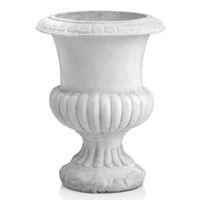
Concrete is generally considered to be relatively inexpensive, but the cost varies widely depending on the container size and design.
Although concrete is extremely long-lasting and resilient to weather, large concrete planters are extremely heavy, thus making them practically impossible to move.
As concrete pots age, they develop a beautiful “patina”.
Concrete is a great insulator and will protect roots from extreme temperatures.
HYPERTUFA CONTAINERS

Making hypertufa is very easy. Hypertufa is made with Portland cement, peat moss, and perlite.
This durable, frost-proof material resembles concrete in appearance but is far lighter than concrete.
New containers or repurposed items for container gardening
Reusing items for growing containers is a smart way to save money.
It’s also a worthwhile idea to think about whether to purchase new (or gently used) garden containers, or whether to create your garden using repurposed items. Maybe you would prefer a container garden that combines both.
As long as the object is capable of holding an appropriate amount of soil and is made from the right material, it can be turned into a garden container.
It won’t cost you a lot to get started with a container garden if you already have the appropriate items or find them at a flea market, garage sale, or in someone else’s rubbish.
Regardless of whether a potential potting container candidate is old or new, it’s worth taking the time to investigate its properties.
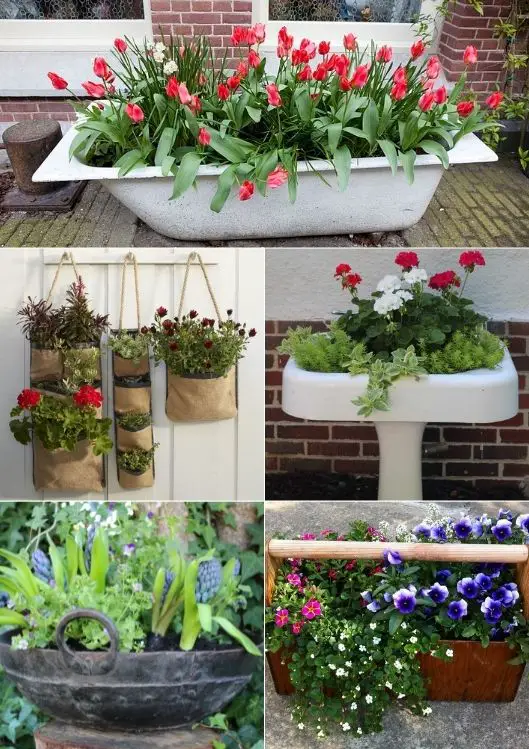
THINGS TO CONSIDER BEFORE REPURPOSING AN ITEM AS A POTTING CONTAINER
- Verify that the object has not been used to store any chemicals. Wood and other materials may be contaminated by solvents, pesticides, and other chemicals. You should pay particular attention if you plan on growing food in the container.
- Plastic objects should probably not be used for growing food. BPA (bisphenol A) may be present in new plastic containers, a chemical with adverse effects on health. It’s harder to determine if BPA is present in older plastic containers, however.
- Use caution when repurposing items containing asbestos. Thousands of household items, such as hair dryers, toasters, crock pots, and coffee pots, used asbestos in their manufacturing process prior to the early 1980s. It has been shown that asbestos increases your risk of developing respiratory diseases.
- It is not recommended to use items painted before the late 1970s, because until 1978, a lot of paint was lead-based, an obvious health hazard.
- Don’t use anything valuable as a container. Make sure that the glass lampshade or old beer stein mug you are planning to use to hold your plants isn’t a valuable antique.
Of course, Your personal style and preference also matters
Your personal style is another consideration when selecting containers for your garden.
Your containers should fit seamlessly into your personality, home, landscape, and daily life, no matter what type you choose.
You might not choose whiskey barrels for a formal home, or for a balcony outside of a sleek, urban apartment. However, in a country cottage or on a rural deck, they would look great seated on the front steps.
A modern, powder-coated metal planter box would look great on that urban balcony.
Traditional terracotta containers or cast iron urns would complement a formal home’s landscape nicely.

However, that doesn’t mean you can’t mix things up. You can always opt for something unconventional if your personal style is a bit eccentric.
Consider making more than one container garden, each with its own style, if you have a larger yard. Let your imagination fly as you gain more and more experience with container gardening.
If you know how to take care of your containers properly, there’s nothing wrong with having an odd assortment of containers.


1 comment
May I simply say what a relief to uncover somebody that really understands what theyre discussing over the internet. You certainly know how to bring a problem to light and make it important. More and more people really need to check this out and understand this side of the story. I was surprised that youre not more popular because you certainly have the gift.